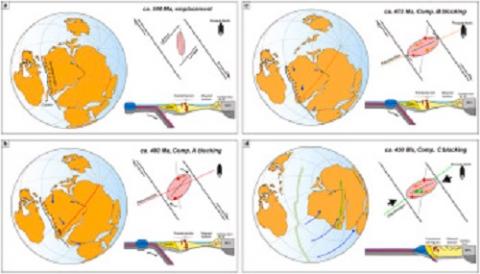Silvana E. Geuna, Leonardo D. Escosteguy, Belena Díaz Appella, Lucio Pinotti, Fernando, D′Eramo, Maria Helena, B.M.Hollanda
2 021
Journal of South American Earth Sciences Volume 106, March 2021, 103059
The Pampia cratonic block is juxtaposed to the Paleoproterozoic Río de la Plata craton through the Córdoba fault, an extension of the Transbrasiliano lineament. As a fragment of hyperextended crust, it was the locus of several magmatic belts during the Paleozoic. The Ordovician Famatinian orogen, for example, developed on its western margin as a consequence of subduction, which would lead to the accretion of Cuyania at ~460 Ma. The El Hongo trondhjemite is a small Famatinian pluton emplaced at ~ 500 Ma, close to the eastern margin of Pampia, controlled by shear belts in the foreland setting. New Ar–Ar ages verified that the cooling lasted at least until 430 Ma. Protracted cooling of this intrusion recorded magnetic remanence comprising several magnetic components, all of them carried mainly by hematite, and subordinately by magnetite. Hematite is present as a product either of exsolution from ilmeno-hematitess, or of low-temperature oxidation of magnetite (martite). The remanence is interpreted to have been acquired thermochemically during repeated pulses of fluid migration and deuteric oxidation. The A and B directions are predominant and have an arcuate distribution identifying clockwise rotation during acquisition. Other two directional groups, C and D are less represented, restricted to narrow patches; they seem to be acquired later, and coincide roughly with the ill-defined Silurian-Devonian Gondwana apparent polar wander path for the Early Paleozoic, implying that rotations had finished by then. An emplacement along dextral strike-slip fault systems is envisaged for El Hongo trondhjemite, where faulting occurred through shear belts in the weakened back-arc and foreland of the Famatinian belt, in response to the oblique subduction that would have accompanied the clockwise rotation of Laurentia around Gondwana during the Early Paleozoic. Strike-slip and rotations would have finished at ~460 Ma, coinciding with the final docking of Cuyania.

